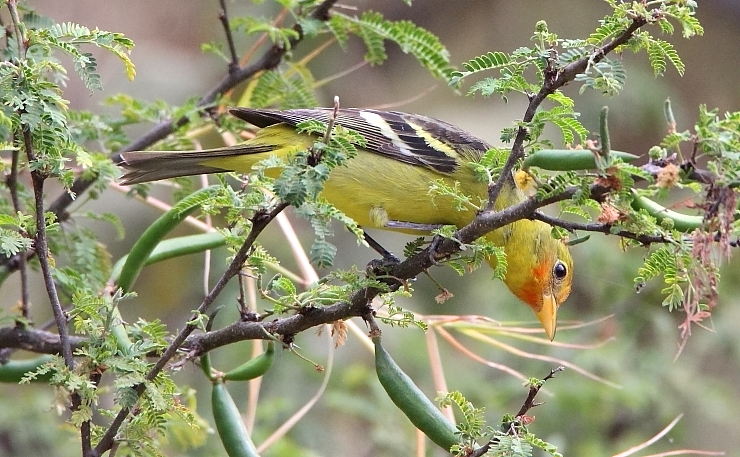
In my never-ending quest to expand my year list, Monday the 24th took me to the area of La Escalera/El Palmar/Arúmbaro. This is my best place to pick up species that inhabit, or visit, the border between the Hot Country thorn forest and highland pine-oak forest habitats.
I dipped on one of my favorite birds from this area, the Lesser Roadrunner, as well as the marvelous Sparkling-tailed Woodstar (a long-tailed hummingbird). But the day did provide me with a parade of some of Michoacán’s most colorful birds, some of them migratory, and others local specialties. So I’ll just go straight to the photos.
Before I even got out of my car at my first stopping point, I heard a loud, repetitive song that I could not recognize. It turned out to be a Bright-rumped Attila, a bird I have seen a couple of times, but not enough to know its song. It wasn’t the most colorful species of the day. But its rump was somewhat bright, I suppose.
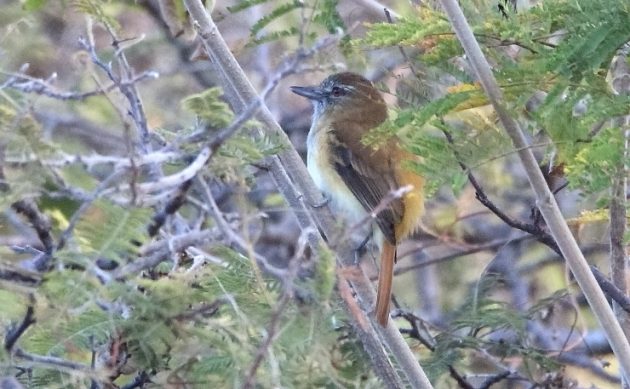
The Black-vented Oriole is our most common resident oriole, even visiting my suburban yard. But this one looked especially bright, glowing in the morning light.

Backlighting showed off the rusty crown of this Rusty-crowned Ground-Sparrow. Unlike the Yellow-breasted Chat shown below, this bird chose to stay, as is its habit, within deep brush.
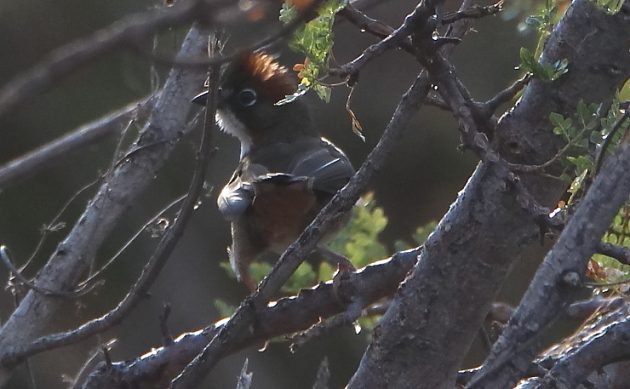
The Hepatic Tanager is perhaps our most common resident tanager. On this particular day, he inaugurated a chain of beautiful tanagers.
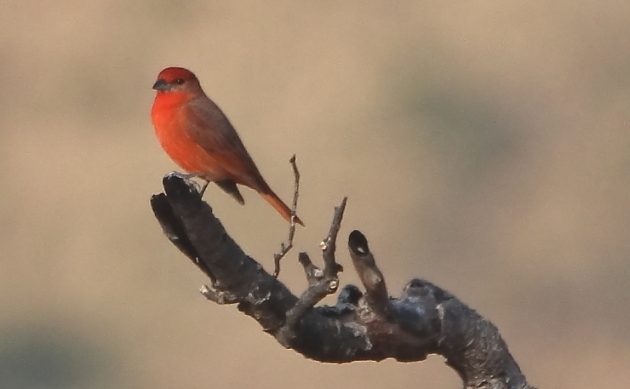
This Black-headed Grosbeak displayed several nice colors beyond basic black.
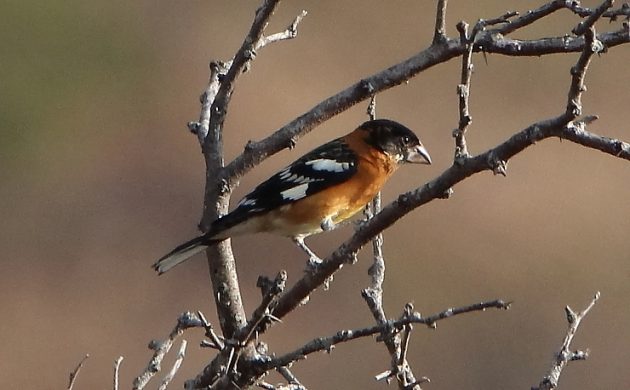
Eastern Bluebirds seemed to be everywhere. Oddly enough, it is the Western Bluebird that bears the taxonomic name of Sialia mexicana; but in my experience, the Eastern Bluebird (Sialia sialia) is much more common in most of Mexico.
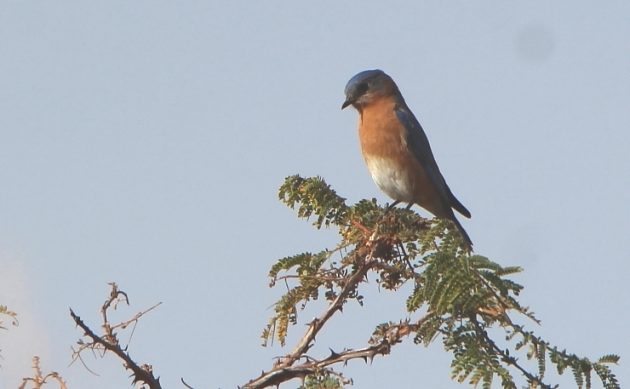
Stripe-headed Sparrows are not colorful, but I chose to show this photo anyway. I recall that I myself have had that very same conversation (“with your wife”, she adds).
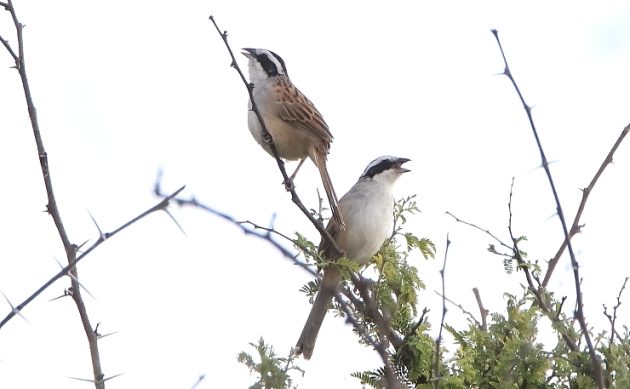
It was a rare treat to see a migratory Yellow-breasted Chat out in the open. His pose was cool, as well.
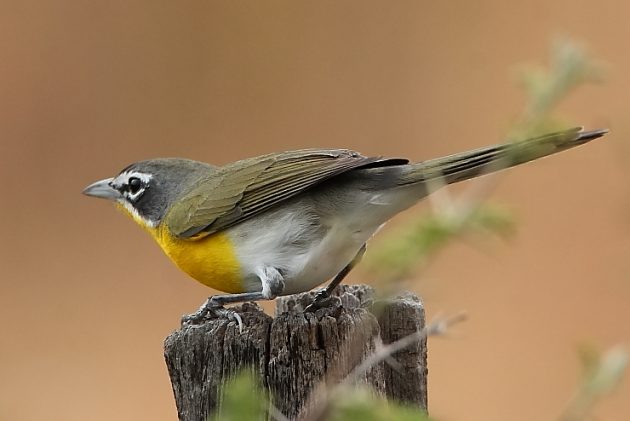
This was not the bluest Indigo Bunting of the day (there were lots), but it did give me the best photo. I’m no expert, but suspect this is an immature male trying out his very first indigo coloring.
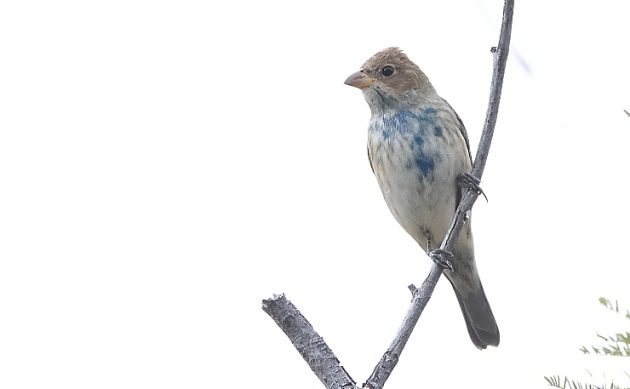
After a quick drive to my second stopping point, I had the rare treat of seeing a Golden-crowned Emerald. This medium-sized hummingbird has a long, split tail. Unfortunately, he never came out in the open for a full-body shot. And it seems to be a rule that whenever I manage to photograph a hummer’s feathers showing their irridescent colors, the shot turns out unfocused. But in this case, I’ll include it anyway, so you can see the colors that give this hummer its name.
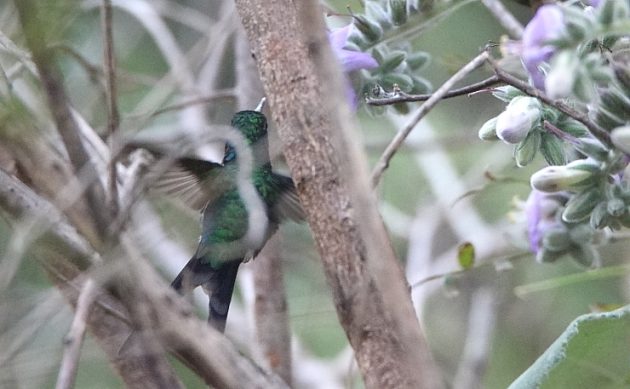
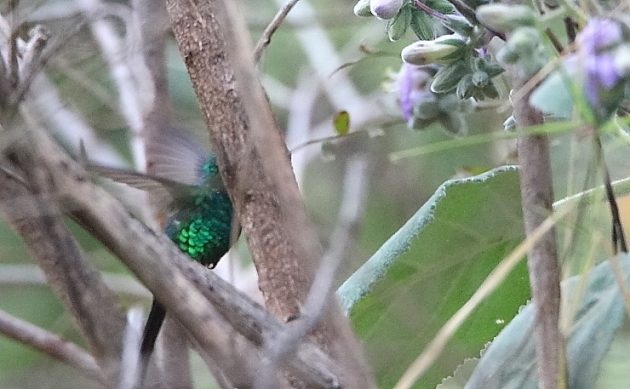
The Wilson’s Warbler is our most common migratory winter warbler. But this one gave me what is perhaps my most charming photo, so far, of this ubiquitous visitor.
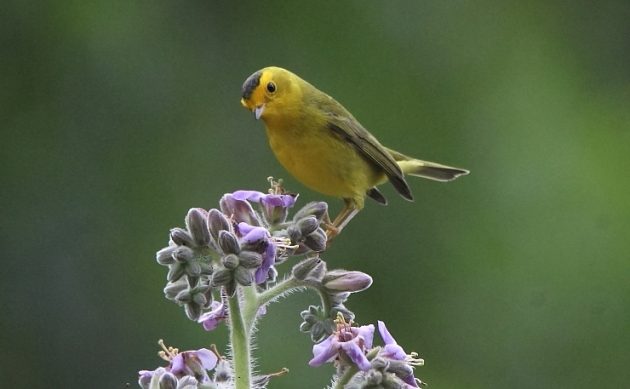
And then began the parade of tanagers. While Michoacán doesn’t offer the spectacular tropical tanagers of Central and South America, those we have are also very colorful. A resident female Red-headed Tanager didn’t sport much in the way of colors, but a more distant, and unfocused, male of the species soon did.
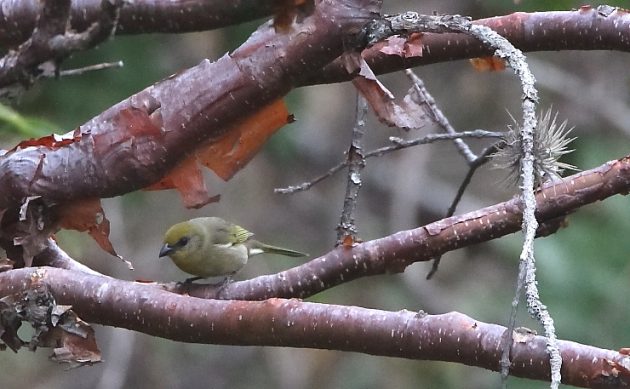
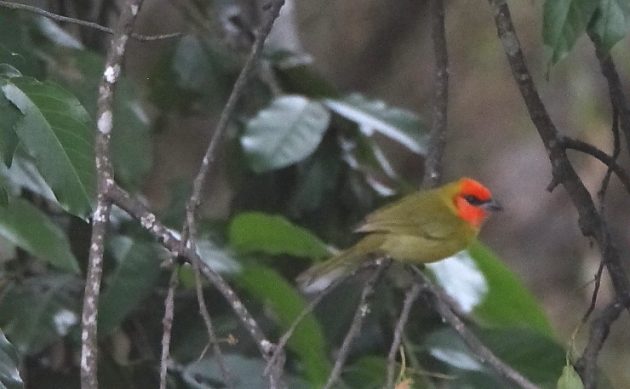
Only a few minutes later, it was a male Flame-colored Tanager that came to show off its incendiary colors.
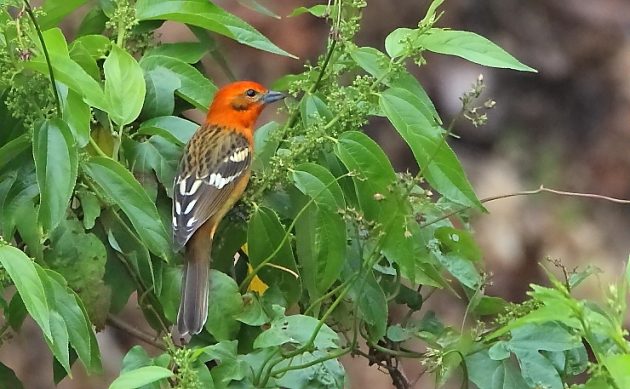
Another short drive, and I was surrounded by migratory Western Tanagers. Most were males, but an only slightly less showy female eventually turned up.
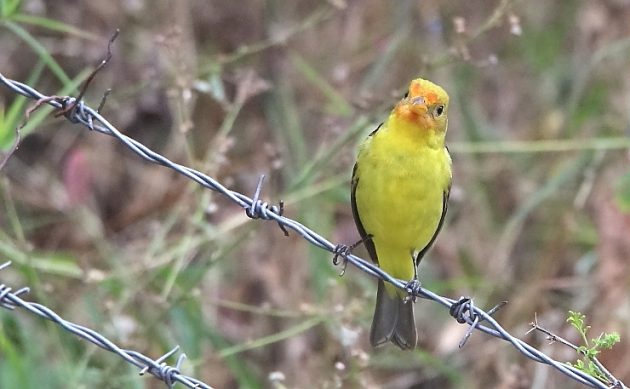
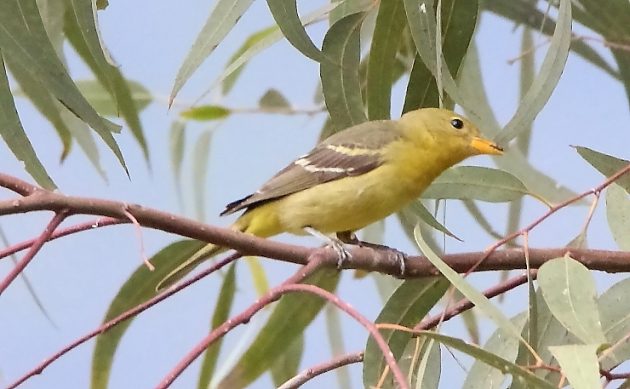
A beautiful male Hooded Oriole seemed to feel especially at ease among similarly-hued Leonotis flowers.
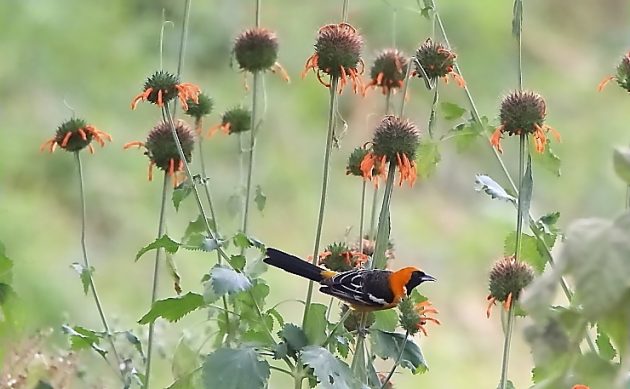
There were quite a few other bright birds, such as a pair of Golden Vireos, a Painted Redstart, and several Lazuli Buntings. Also, on my way home, I saw a lovely male Summer Tanager, though it refused to come out of dense brush. Since that gave me a grand slam of our region’s mega-colorful tanagers, I’ll swallow my pride and include an image:
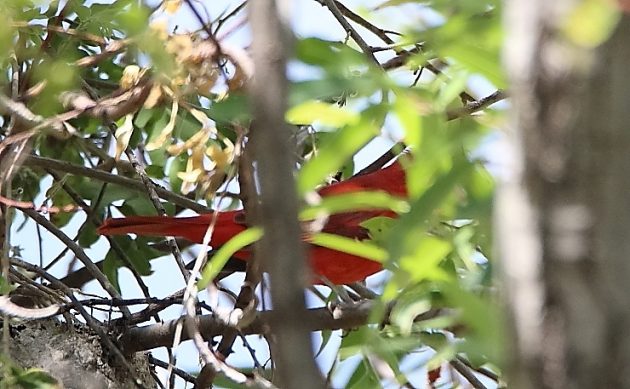
It’s in there somewhere, I swear! While the photo is unfortunate, the color is very fortunate indeed, as most Summer Tanagers lose their bright hue in the winter.
And how am I doing on my species race for the year? Right down the middle, 176 species so far, which is almost an exact average for January 24th over the past five years. [Update: I ended the month with my second-highest total in the same period, undoubtedly because January blessed me with five Mondays, which means five major outings.]













Leave a Comment